|
Akhara & Hinduism
Akhara word is often heard during kumbh but masses rarely know about it. Their strength is showcased in the Kumbh Mela, held every twelve years in each of the four cities — Allahabad, Haridwar, Nasik and Ujjain—which commands worldwide media attention, particularly the bathing procession of naked Shaiva sadhus. The akharas get priority to take dip in Ganges during Kumbh & Mahakumbh according to the seniority. What is Akhara: An akhara is a communal religious monastery. Members of an akhara bear allegiance to the same guru and follow similar modes of worship. As members have renounced the world, arrangements for their boarding and lodging are made by the akhara. The saints of the akharas don’t make discourses. Who founded Akharas: Jagat guru Sri Adi Shankaracharya founded seven Akharas in 8th century to protect Hinduism. He inspired his followers to study weaponry because he believed it strengthens the mind. Why founded Akharas: Traditionally, akharas are known as wrestling pits but through Shankaracharya’s teachings they came to be seen as the centre of debates and religious discussions. In order to protect Sanatana dharma, the king used to seek the help of Naga sannyasis, then give them the estates of some villages. The Akhil Bharatiya Akhara Parishad (ABAP) is the apex organisation of Hindu Sadhus and Saints who work for the preservation of Hindu religion and culture. In 1565, Madhusudan Sarasvati started preparing akharas as an armed military force to resist invasions and protect Hindus. ABAP has taken the following decisions recently:
How many Akharas: Mahanirvani, Niranjani, Juna, Atal, Avahan, Agni and Anand Akharas set up by Sri Shankara later divided into 13 Akharas according to beliefs. These Akharas are grouped into three – Shaivites (7), Vaishvanites (3) and Sikh (3). Shaivite Akharas: Shaiva akharas include Juna, Mahanirvani, Niranjani, Atal, Anand, Awahan and Agni. In the first six Akharas, caste is not a barrier for new entrants. The ascetics of Agni Akhara claim themselves as Brahmacharis, from the Brahmin caste. These Shaiva ascetics are also called Dashanami--literally meaning “ten names” or lineages said to have been started by the disciples of Adi Shankara, 8th century’s Hindu philosopher. These lineages—Aranya, Ashram, Bharati, Giri, Parvata, Puri, Saraswati, Sagara, Tirtha and Vana—are reflected in the names of sadhus of all the seven Shaiva or Dashanami akharas. They wear saffron coloured clothes.
Vaishnavite Akharas, also known as Bairagi or Vairagi: Vaishnava Akharas are founded by the 14th century philosopher Ramanandacharya. Nirvani, Nirmohi and Digambari are the three major akharas of the Ramanandi order, and all have their principal seats of power in Ayodhya, considered central to their theology as it is believed to be Lord Rama’s birthplace. They wear white clothes.
Sikh Akharas: They wear black clothes. 1. Shri Panchayati Bada Udasin Akhada - It has its headquarter at Pryagraj. They follow the teachings of Sri Chand, the elder son of Guru Nanak. It was founded in 1825 by Yogiraj Shree Nirvandev ji Maharaj in Haridwar. The sect worships Jagatguru Bhagwan Shree Shreechandra Ji. 2. Shri Panchayti Naya Udasin Akhada – It has its headquarter Haridwar. It was formed by Mahant Sudhir Das in 1846 following a dispute with the Shri Panchayati Bada Udasin Akhada. 3. Shri Nirmal Panchayati Akhada (Haridwar): They follow Nirmal Sampraday. It was founded in 1856 in Punjab by Durga Singh Maharaj. The akhada has close ties with Sikhism, especially Khalsi Sikhs. Guru Gobind Singh had sent a batch of five saffron robe seers (Panch Nirmal Gaurik) to learn the Vedas, Vedang and Dharma-shastra to Varanasi. However, after learning, these seers are believed to have formed their own sect by the name of Nirmal Sampraday. The akhara was established at Kankhal near Haridwar.
0 Comments
In fact, this universe is one which encompasses all physical matter, including all the stars, planets, galaxies, etc. in space. All planets, stars & galaxies are inter-dependent and have profound effect on living beings including Human beings. This fact was first realised by Hindus and thus the Hindu Calendar was created. The Hindu Calendar is not the arithmetical division into months and year, but based on scientific study of moon, planets and stars.
The modern science has established the effect of movements of the moon, the planets, the stars and other celestial bodies on the human psyche, just as the tides are influenced by the gravitational attraction of the moon and the sun. We sense seasonal changes. Ancient rishis deeply studied the impacts of celestial bodies human beings and devised the Hindu calendar which provides knowledge of auspicious or inauspicious moments. Hindu Calendar is an accumulation of numerous lunisolar calendars used widely in Vedic Astrology. Samvatsara As per Hindu system, there is a cycle of 60 years which repeats. Each year has different attributes and auspiciousness or inauspiciousness. Jupiter takes 11.8618 Earth years to complete its elliptical orbit the Sun (i.e., Jovian Year). The earth year in Sanskrit is called as Samvatsara. During one Jovian During one Jovian year, Jupiter crosses 12 Zodiac signs and thus completes 12 Samvatsaras. During the entire journey Jupiter has either positive or negative influence on the individual. The sixty years are named in Sanskrit indicating different consequences for the year concerned (Names mentioned below - Note – 1). Sixty Samvatsaras are divided into three groups of twenty each. The first twenty from Prabhava to Vyasa are assigned to Brahma, next twenty from Sarvajit to Prabhava to Vishnu and last twenty from Plavanga to Kshaya to Shiva. Individual born in the respective year will have certain special talent, success in particular traits, bestowed with wealth, fame or generosity etc. The year typically begins in mid-April. The year 2019-20 was named ‘Vikari’, that lived up to its name by being a ‘illness’ year. The year 2020-21 was named ‘Sharvari’, meaning darkness, and it did push the world into a dark phase. The ‘Plava’ year (2021-22) is beginning. ‘Plava’ means, "that - which ferries us across". The Varaha Samhita says: this will ferry the world across unbearable difficulties and reach us to a state of glory. And take us from darkness to light. The year 2022-23 is named ‘Shubhkrut’, meaning that which creates auspiciousness. To discuss full characteristics associated with each year is not possible in this article. Panchang Further, Hindu Calendar has five limbs, called in Sanskrit as Panchang or Panchangam. Panchang comprises of five distinguished sources of energy, which are – day (Vaar), Date of the month (Tithi), Stars (Nakshatra), Half Lunar Day (Karna) and Luni-Solar day (Yoga). Day of the Week (Vaar) The 7-day week starts from Sunday to Saturday and are named after their representative planets (Sunday – Sun, Monday – Moon, Tuesday – Mars, Wednesday – Mercury, Thursday – Jupiter, Friday – Venus and Saturday – Saturn). It modulates auspicious events, dates and occasions. The counting of day begins with the sunrise of the first day to the sunrise of the second day. A specific Vaar is important, as they are supposed to be suitable for specific activities. In general, out of seven days, Monday, Wednesday, Thursday and Friday are considered auspicious for commencing good work. However, Saturday is considered an auspicious day for undergoing operation. Lunar Day (Tithi) Tithi depends on position of Moon in Shukla Paksha (waxing phase) or Krishna Paksha (waning phase) and is named after the condition of Moon. There are 14 tithis in both cycles between Amavasya and Purnima. Tithi plays an important role along with nakshatra in Hindus' daily as well as special activities in selecting the muhurta. There are auspicious Tithis as well as inauspicious Tithis, each considered more propitious for some purposes than for other. Lunar month has 30 Tithis – 15 Tithis each during Shukla paksha (i.e., new moon to full moon, illumination of moon increases) and Krishna Paksha (i.e., full moon to downsizing, illumination of moon decreases). With each tithi, moon gains 12 degrees thus totalling to 360 degrees. As per Hindu Astrology, Tithis during 15 Tithis of Shukla / Krishna Paksh are ruled by different deities (say, first day - Agni, second - Brahma, third - Gauri, fourth – Yama / Ganapati, fifth - Serpent, sixth - Kartikeya, seventh - Surya, eighth - Rudra, nineth - Ambikaa, tenth - Dharmraja, eleventh - Rudra, twelfth - Vishnu, thirteenth - Kamdeva, fourteenth - Kali, fifteenth – Pitru devas). Each Tithi is auspicious for particular aspect of life. Pratipada (1st day) is auspicious for all types of religious and auspicious ceremonies, festivals, journeys, wedding, installation, observing a vow, accepting honours or a position, activities related to real estate and hair cutting; Dwitya (2nd day) is good for starting any new work, for laying the foundation of house, factory, and other things of a permanent nature; Tritya (3rd day) is auspicious day to start important businesses, wedding, the first music lesson, the first feeding of a child, construction; Chaturthi (fourth day) is not good for auspicious work, good for destruction of enemies; Panchami (5th day) is favourable for administering medicine, to start important businesses, wedding and healing; Shashthi (6th day) for enjoyment; Saptami (7th day) for journey; Ashtami for building defence; Navami (9th day) is not good for auspicious works; Dashami (10th day) for religious functions & spiritual practices; Ekadashi (11th day) for fasting; Dwadashi (12th day) for religious ceremonies & sacred fire; Trayodasi (13th day) for sensual pleasure; Chaturdashi (14th day) is not good for auspicious work; Purnima / Amavasya (15th day), Purnima for fire sacrifice and Amavasya for propitiation of the Manes and performance of austerities. The tithis are divided into five groups based on auspicious or inauspicious mahurats (48 minutes) as under:
Poorna (Sampoorna - Full or New Moon) Tithi – Thursday Panchami, Dashami and Amavasya (New Moon) or Poornima (Full Moon). It is considered auspicious to fulfil resolutions taken. Lunar Mansion (Nakshatra) Nakshatras are group of 27 stars forming a constellation or zodiac sign. The universe is divided into 12 constellations according to Vedic Astrology. They are analysed according to the Moon’s position. There are 27 group of stars (Names mentioned below - Note – 2). A few groups of nakshatras are considered either auspicious or inauspicious. Half Lunar Day (Karana) The half of a Yoga is called Karana. 2 Karanas make a Date or Tithi, totalling to 11 Karanas in all. 4 of them are fixed, and remaining 7 are movable. There are 11 Karanas (Names mentioned below - Note – 3). The first 7 of these Karanas are movable (Chara) i.e., it cannot be predetermined as to on which dates, these are going to occur, but the last 4 Karanas are fixed (Sthira), and hence can be predetermined. Luni-Solar Day (Yoga) A yoga is calculated by summing the Longitude of Moon and Sun and divided into 27 Yogas in 13°20'(Names mentioned below - Note – 4). 27 Yogas are for 27 Nakshatras. Out of 27 Yogas, nine are inauspicious - Vishakumbha, Atiganda, Shoola, Ganda, Vyaghaata, Vajra, Vyatipaata, Parigha and Vaidhriti. Significance of time zones in a day (Mahurat): 24 hours of a day is divided into 30 time zones in a day, called as Mahurat. Thus, each Mahurat is of 48 minutes. Mahurat is calculated with sunrise, assuming sunrise at 06:00 AM on the vernal equinox, which is the Vedic New Year. All the 30 Mahurats are called by a particular name and have property of auspiciousness or inauspiciousness. The Vedic scriptures generally recommend one or more Mahurats to perform rituals and practices. Brahma Mahurat is approximately one and a half hours before sunrise or more precisely is 96 Minutes and is considered most apt for meditation. Notes –
This is claimed that Snatana Dharma is purely scientific. Truly, the Snatana Dharma is developed after research of thousands of years by rishis (ancient Hindu scientists, seers). This website www.dnaofhinduism.com attempts to highlight the scientific basis of Snatana Dharma. As per modern Astronomy, sun passes through the constellations that formed the Zodiac: Aries, Taurus, Gemini, Cancer, Leo, Virgo, Libra, Scorpio, Sagittarius, Capricorn, Aquarius and Pisces. Under the influence of gravitational force and because of the orbital path combination of sun, moon and earth, lunar and planetary bodies impact on human bodies. Lunar cycle has eight phases are, in order, no or new Moon (completely dark side facing earth), waxing crescent (tiny portion visible), first quarter (half-moon visible), waxing gibbous (most of the moon visible), full Moon, waning gibbous (illuminated side shrinking), third quarter (half illuminated) and waning crescent (thin curve). The cycle repeats once a month (every 29.5 days). Scientific Significance: The modern science has researched as follows:
Spiritual Significance: The dates viz. Sankranti, Chaturthi, Ekadashi, Trayodashi, Purnima and Amavasya, are important in Hinduism. Most of the festivals are celebrated on these dates and vrats and upvas are observed. The question is “Why so.” These dates in Hindu calendar coincide with astronomical facts which has correlation of Sun, Moon, Earth and Stars. Sankranti, Chaturthi, Ekadashi and Trayodashi are the astronomical dates specially dedicated to five deities – Sankranti – Sun, Chaturthi – Sri Ganesh, Ekadashi – Sri Vishnu and Trayodashi – Shiv ji and Ma Parvati. Chaturthi (4th date) dedicated to Sri Ganesh: Fourth day falling after full moon (Purnima) in Krishna Paksha is called as ‘Sankashti Chaturthi’ and fourth day after new moon (Amavasya) in Shukla paksha is termed as ‘Vinayaka Chaturthi’. The word “Sankashti” comes from Sanskrit and implies “freedom from difficult times”. In Hindu scriptures, Chaturthi Tithi belongs to Lord Ganesh, son of Lord Shiva and Goddess Parvati. Lord Ganesh signifies prosperity, wisdom and good fortune. He is believed to be the remover of obstacles and also the lord of learning. On Sankashi Chaturthi, devotees worship Lord Ganesh to overcome their hurdles in life and to come out as an achiever in difficult times. Ekadashi (11th date) dedicated to Sri Vishnu: Devotees of Bhagwan Vishnu observe Ekadashi fasting to seek His blessings. It falls on 11th day of lunar month. There are two Ekadashi fasting in a month, one during Shukla Paksha and another during Krishna Paksha. 24 Ekadashi occur during the year (January – Pausha Putrada Ekadashi, Saphala; February – Jaya, Shattila; March – Amalaki, Vijaya; April – Kamada, Papmochani; May – Mohini, Vaishnava Varuthini; June – Nirjala, Apara; July – Devshayani, Yogini; August – Shravan Putrada, Vaishnava Kamika; September – Parsva, Aja; October – Papankusha, Indira; November – Devutthana, Rama; December – Mokshada, Utpanna. According to Hindu scriptures, Ekadashi and movement of the moon has a direct correlation with the human mind. It is believed that during Ekadashi, our mind attains maximum efficiency giving the brain a better capacity to concentrate. Study says, from the eleventh day till fifth day post new moon or full moon day, moon influences us maximum and imbalance our digestive system. This also cause decrease in brain's functioning and cause weakness in memory, thought and decision making. Therefore, to avoid all these complications, it's important to clean our digestive system on every 11th day of lunar cycle. This helps our digestive system to clean up all the food and mess in our body. That is why fasting is done on Ekadashi. Pradosh (13th date) dedicated to Shiv ji and Ma Parvati: Pradosh Vrat or Pradosham is a popular Hindu Vrat that is dedicated to Bhagwan Shiva and his wife, Goddess Parvati. Devotees observe this vrat for eternal bliss, spiritual upliftment and good health. It falls on trayodashi or 13th day of lunar month. There are two trayodashi fasting in a month, one during Shukla Paksha and another during Krishna Paksha. 24 Pradosham occur during the year. Purnima (Full Moon): Purnima or the full moon is widely recognized as a symbol of fullness, abundance, and prosperity in Hindu belief. Several Hindu festivals in Panchang are aligned with the full-moon day, which is considered a benign and blessed occurrence. There is 12 Purnima in a lunar calendar. January – Pausha Purnima; February - Magha; March - Phalguna; April - Chaitra; May - Vaisakha; June - Jyeshta; July - Aashaadha; August - Shraavana; September - Bhadrapada; October - Ashwin; November - Kartika; December – Margashirsha. Several festivals fall on Purnima such as Guru Ravidas Jayanti on Magha Purnima; Chhoti Holi on Phalguna Purnima; Hanuman Jyanti on Chaitra Purnima; Buddha Purnima on Vaisakha Purnima; Vat Purnima on Jyeshta; Guru Purnima on Aashaadha Purnima; Raksha Bandhan on Shraavana Purnima; Pitrpaksha begins on Bhadrapada Purnima; Sharad Purnima on Ashwin Purnima; Dattatray Jayanti on Margashirsha Purnima. Shri Satyanarayan Puja is also performed on every Purnima to seek the blessings of Lord Narayan. Narayan is an incarnation of Lord Vishnu. Amavasya (No or New Moon): Amavasya is the one when no moon is visible in the sky. Amavasya occurs once a month, with 12 such no moon days falling in a year. Being the darkest day of the month, Amavaysa is considered one of the most powerful and impactful times of the year. Several important rituals and traditions are observed on this day by devotees across India. February (Magh) – Mauni Amavasya; May (Jyeshta) – Shani Jayanti, Vat Savitri Vrat; August (Bhadrapada) – Pithori Amavasya; September (Ashwin) – Sarvapitri Amavasya; October (Kartika) – Diwali, Laxmi Puja, Sharda Puja, Bengal Kali Puja. Sankranti dedicated to Sun: Sun stands for “Pratyaksha-Braham”, “a manifestation of the Absolute”, bestowing knowledge, spiritual light, and wisdom. Sankranti are the days of transmigration of sun from one zodiac to another. January – Sun enters in Makar Rashi (Capricorn); February – Sun enters in Kumbh Rashi; March - Sun enters in Meena Rashi; April - Sun enters in Mesha Rashi; May - Sun enters in Vrishabha Rashi; June - Sun enters in Mithuna Rashi; July - Sun enters in Karka Rashi; August - Sun enters in Simha Rashi; September - Sun enters in Kanya Rashi; October - Sun enters in Tula Rashi; November - Sun enters in Vrishika Rashi; December - Sun enters in Dhanu Rashi. Makar Sankranti is a special festival across the country, where the God of Sun is worshipped and gratitude is shown by offerings and prayers. The festival of Makar Sankranti is celebrated in every state with different names. But the essence remains the same. In Andhra Pradesh, Sankranti is known as Pedda Panduga, Makar Sankranti in North & Karnataka, Magh Bihu in Assam, Magha Mela in the regions of central and north India, Uttarayan in Gujarat, Khichdi Sankranti in Uttar Pradesh, Pongal in Tamil Nadu. A day prior to Makar Sankranti is Lohri, a harvest festival of Punjabi. Most of the Hindu festivals are celebrated as per the lunar cycle of the Hindu calendar. But Makar Sankranti is celebrated as per the solar cycle. It falls on Georgian date every year (January 14) except in some years when date might shift to a day of that year. It is due to the revolution of the Earth around the Sun. It marks the commencement of sun’s journey to northern hemisphere (Uttarayana). On this day, taking bath in the rivers purify the self. Now-a-days, the younger generation rejects Hinduism because they find it difficult to believe many of the concepts. The spirit of rituals is still valid. But the loss of simplicity and economy derailed them from their original purpose. Rituals and ceremonies, involving skills and modes of action learnt painstakingly by our ancestors and transmitted inter-generationally to become part of collective memory and cultural repertoire, are necessary. However, during passage of time malicious influence of certain dominant sections of society and invaders polluted the Hindu sacred rituals. The purpose of these rituals is to purify, renew society, bridge over critical moments, and stimulate or resuscitate the vital powers of nature.
In Hinduism, rituals are not only for life time but also for before birth and after death. Rituals forge a sense of belonging and common identity which transforms individuals into cohesive communities. Participating in collective rituals increases generosity. Psychology of the Indian rituals & tradition is an inner discipline in search of realizing truth and perfection in the human condition. Purposes of Rituals: The purposes of rituals are varied; with religious obligations or ideals, satisfaction of spiritual or emotional needs of the practitioners, strengthening of social bonds, social and moral education, demonstration of respect or submission, stating one's affiliation, obtaining social acceptance or, sometimes, just for the pleasure of the ritual itself. The rituals in Hinduism are especially important for the Householders to achieve the three of the four important aims of human life, namely Dharma, Artha and Kama. Rituals are performed to bring spirituality into human life and inculcate feelings of devotion and religiosity. Rituals in Hinduism are designed to built-in selflessness and to ingrain the process of surrender in day-to-day life. Scriptures for Rituals: Four Vedas and Hindu scriptures - Brahmanas, Aranyaka and Sutras. A collection of sutras becomes a text containing rules & directions with which the teachings of ritual, philosophy, grammar, or any field of knowledge can be woven. When the Hindu rituals are done as prescribed, these attain great powers, fulfil the desires and achieve their goals. The rituals serve as a bridge between our human beings and the divine and that of ancestors. Physical and mental purity are vital to the observance of Hindu rituals. Important Rituals in Hinduism: A few rituals are listed hereunder. Five daily Yajnas to share –
These include study of Hindu scriptures, daily pooja, feeding & respecting invited or uninvited guests (Atithi devo bhava), first roti (bread) to cow and the last to dog etc. Four stages of life cycle - In Hinduism, entire life is divided into four objects of life and life stages (Ashrams) –
Hindu’s sixteen Sanskars – Sixteen sanskars (before conception till after death) are offered to God to develop divine consciousness in the individual which help him to lead better life and to orient his sub-conscious mind for total surrender. These are as under:
Hindu rituals to care environment –
Pilgrimages in Hinduism to surrender – Pilgrimages are for both inward as well outward journeys. Even thought of travelling to pilgrim locations brings positive change in state of mind. It connects with all walks of people and brings humility. It detaches the mind from worldly affairs and simultaneous chanting concentrates the mind so essential for meditation & surrender. Hindu Festivals to share and surrender – Celebrating festivals on community basis, not only bring personal happiness but also play a pivotal in social cohesion which brings peace, harmony and happiness. It is sharing and enjoying. Further, festivals bring the individuals closer to the almighty by fasting (upavaasa), special prayer, japa, havan/Yajna, meditation, donation/daan, etc. These practices reduce indulgence in sensual pleasure & distractions of mind, improve focus & humility, remind high standards & morals followed by the deities worshipped. Hence, the rituals in Hinduism discarded as blind faith, actually convert selfishness into total surrender to facilitate moksha, total surrender and liberation. This makes this life happy and liberates the one from rebirth. Science in Hindu calendar
Hindu calendar system offers a multi-dimensional method of structuring time, combining information about lunar days, solar days, lunar months, solar months, the movements of the Sun and the Moon in relation to stellar constellations, and other astronomically defined time spans. In the Hindu calendar, seasons follow the sun; months follow the moon; and days, both the sun and the moon. The western or Christian calendar is solar calendar and the Islamic or Higri calendar is lunar calendar. But Hindu lunisolar calendar synchronizes both the solar and the lunar cycles. Hindu calendar has fixed the aberrations as under:
Hindu calendar systems: All the Hindu calendars contain five parts of information: lunar day (tithi), solar day (diwas), asterism (nakshatra), planetary joining (yoga) and astronomical period (karana). This structure gives the calendar the name Panchangam.
When a solar month completely covers an amanta month, that is, when there are two new moons, one falling at the beginning and the other at the end of the solar month, the amanta month that begins from the first new moon is treated as a leap month and prefixed with the title ‘adhika’ or ‘mala’. We call the leap month adhika or mala month.
7. Karana - A karana is half of a tithi. To be precise, a karaṇa is the time required for the angular distance between the sun and the moon to increase in steps of 6° starting from 0°. There are only 11 such karaṇas which fill up the slots of 30 tithis. There are actually 4 "fixed" (sthira) karaṇas and 7 "repeating" (cara) karaṇas.
Yajnopavita consists of two words, yajno and upavit. Vit means that which is woven, that is cloth and upavit means the upper garment. It is hand spun cotton thread worn across the chest resting on the left shoulder. Yajnopavita is mentioned as Janeu in Hindi. Under Upanayana Samskar, first Yajnopavita is performed to bring person to his father Gotra and then Upanayana ceremony is done to initiate teaching of Veda and teaching started with Gayathri Mantra. The Yajnopavita should be done in seventh years. However, it can be done up to eleventh years of age. The power of Yajnopavita inspires pure character and hard work. By wearing this Yajnopavita, one can reach to the ultimate.
In chapter 2 of Taittireeya Aranyaka discusses the five Maha-yajnas, the daily recitation of the Veda (svadhyaya), the yajnopavita (sacred thread) and sandhya worship. It describes the method of preparation of yajnopavita. The Yajnopavita is made up of nine fibers.
The 96 number has special significance. Vedas has 96000 Mantras related to karma and Upasana (fire-sacrifice & worship). After Yajnipavita, the student gets the right to study these Mantras. Total Mantras are 100,000. The remaining 4000 Mantra are for Sanyasis. The Yajnopavita is placed over the right ear lobe during urination or defecations. The reason is explained as under:
Traditions are the set of rituals practiced by a group of people which define the behavior of the people of that group on specific occasion. For generations, specific traditions are followed by Hindus religious without the clear knowledge of science behind them. Many people have been questioning the Hindu traditions and terming them as backwardness.
It is really wonderful to know the deep-rooted benefits of age old traditions followed by Hindus and science behind them. These traditions are helpful in personal hygiene & health, developing positive behavioral attributes and living in non-violent way and happily in joint family system. The advantages are as under: Personal hygiene & health
Developing positive behavioral attitude
Living in non-violent way and happily Hindu undivided family system (HUF) has been prevalent historically. Under the system, two or more generations stay together, headed by senior most person called as Karta. Karta makes decisions on economic and social matters and his wife extends control over domestic matters. Family income flows into a common pool, from which resources are drawn to meet the needs of all members, which are regulated by the heads of the family. After amendments in Hindu Succession Act 1956, the female members are given the right of share to the HUF property. In 2016, a judgment of the Delhi High Court ruled that the eldest female member of a Hindu Undivided Family can be its 'Karta' (manager). Due urbanization, economic development, job opportunities and western influence, HUF witnessed break up and converting into nuclear families. Personal & Social Advantages: HUF system proved to have following advantages:
Note:
What is culture or social behavior? As per Cambridge Dictionary, culture is the way of life, especially the general customs and beliefs, of a particular group of people at a particular time. All societies are having some traditions or social practices or belief system. Traditions are evolved over many generations based on value system of the particular society having some rational backing. It is generally passed down by word of mouth, from generation to generation and is, for the most part, undocumented. Traditions are live if have scientific footing. Some traditions tend to become ritualistic when loses their contemporary relevance. Several Hindu traditions are branded as superstitious but these are based on scientific wisdom gathered by long researches done by Rishis (ancient scientists). However, in absence of teachings about their tangible advantages and apparent link with religious practices, these are exiting from the modern Hindu society. Keeping in view of the above, ancient knowledge of prominent traditions is elaborated hereunder. Charan Sparsh (Touching of Feet):
Shikha or Choti (Peak) on male head
Surya Namaskar (Sun Salutation)
Applying Tilak on forehead
Worship of Tulsi plant (Indian Basil)
Worship of Peepal Tree (Ficus Religiosa)
Kanchedan or Karnvedha (piercing ears)
Why do Indian women wear Choori (Bangles)?
Why do Hindu women wear Bichiya (Toe Rings)?
Why do Hindu women apply Sindoor (Vermillion)?
Why do Hindu women apply Mehndi (Henna)?
While Sleeping Head pointing towards South
https://www.indiatimes.com/ https://www.speakingtree.in/ Symbols are easy way to denote complex ideas. Hindu religion is symbolized more particularly by sign or mark of “Om”, Swastik, Tilak, etc. Sacred Hindu symbols are considered very auspicious and displayed in homes, work places, temples etc. to invoke good fortunes.
Om (Aum, ॐ): The significance of Om is as under:
Swastika (स्वास्तिक ): The significance of swastika which comes from Sanskrit (Devanagari: स्वस्तिक) is as under:
Tilak (तिलक ): The tilak is worn usually on the forehead on a daily basis or on religious occasions. The tilak is applied with ash (vibhuti), sandalwood paste, red kumkum etc. It has various shapes depending on deities or sects such as three horizontal lines across the forehead, a bindu, U shape etc. The significance of tilak is as under:
Moli / Kalawa (कलावा, : This is sacred thread which binds one person to another symbolizing protection provided by one who binds it to another. Kalash ( कलश ): A vessel filled with water, five green leaves placed on it and a coconut put on the leaves. The Kalash is believed to contain amrita, the elixir of life, and thus is viewed as a symbol of abundance, wisdom, and immortality. Metal pot or Kalasha represents material things: a container of fertility - the earth and the womb, which nurtures and nourishes life. The mango leaves associated with Kama, the god of love, symbolize the pleasure aspect of fertility. The coconut, a cash crop, represents prosperity and power. The water in the pot represents the life-giving ability of Nature. Yantra (यंत्र, ): The Sri Yantra or Sri Chakra consists of nine interlocking triangles that radiate from a central point. Of the nine, the four upright triangles represent the masculine side or Shiva; while the five inverted triangles represent the feminine, or the Shakti (Divine Mother). As a whole, the Sri Yantra is used to symbolize the bond or unity of both the masculine and the feminine divinity. It can also mean the unity and bond of everything in the cosmos. Shankh (Counchshell, ): Shakh or sea shell is used as trumpet in Hindu rituals. Shankh is believed to be a giver of fame, longevity and prosperity, the cleanser of sin and the abode of Lakshmi, who is the goddess of wealth and consort of Vishnu. Diya or lighting lamp (दिया : This symbolizes one of the five panchbhoth (earth, fire, water, space and air) and treated as sacred. Shri or Shree (श्री): Shri refer to goddess Lakshmi. Saffron Flag: Dhvaja, or 'flag,' is a symbol of victory, signal to all that "Sanatana Dharma shall prevail." Its color betokens the sun's life-giving glow. Hands in prayer: It is a sign of respect for the sacred, that which is dear to the heart. Lotus (padma): It is a symbol of purity/transcendence. Growing out of the mud, it is beautiful, and though resting on water, it does not touch it. Trident (trishul): It is the symbol of Shiva carried by shaivites. Cow: It is a symbol of purity, motherhood and ahimsa (non-violence). Lotus feet (of guru or deity): It is touching the feet of superiors’ shows an attitude of submission and service. Reference:
Meaning of ‘sanskars’
The Vedic rituals performed since concept ion till death is called as Sanskars. The word ‘sanskar’ means to improve, to purify, and to remove shortcomings. 16 sanskars are performed. Significance of Sanskars [1] As per Vedic belief, there are 3 bodies viz. Physical body (which is cremated or buried after death), Psychic or subtle body (which is physical enough to interact with the physical body and non-physical enough to interact with the soul) and Causal body (which carries the seeds of Sanskars upon death when it goes with the soul). The sanskars are offered to god to develop divine consciousness in the individual which help him to lead better life and to orient his sub-conscious mind for moksha. All sanskars are done through vedic mantras. Description of Sanskars [2][3] |
Archives
March 2022
Categories |

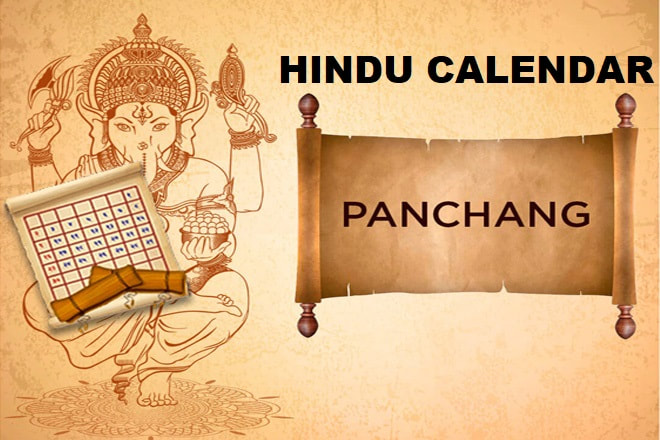
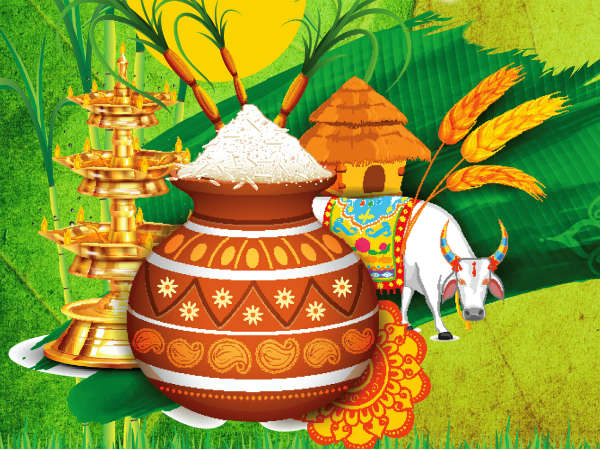
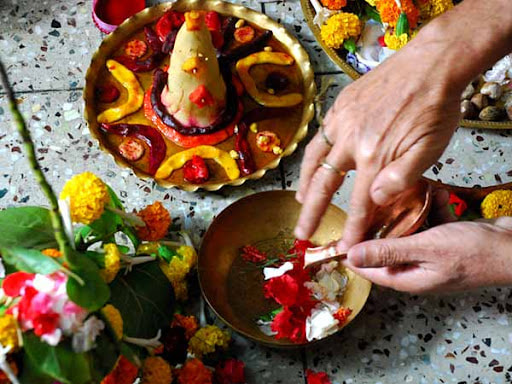
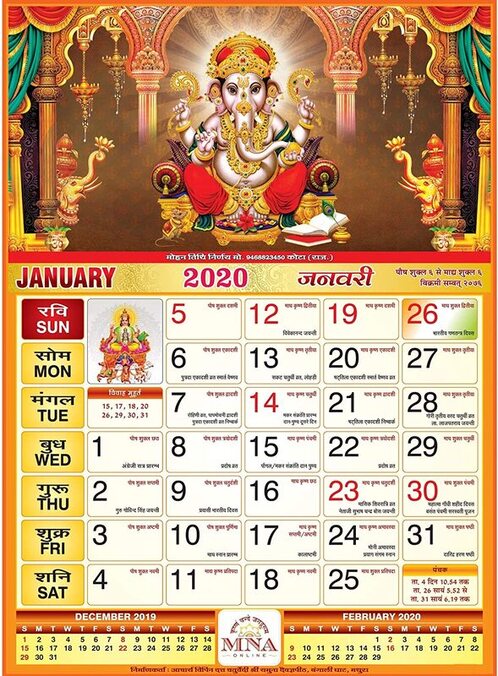
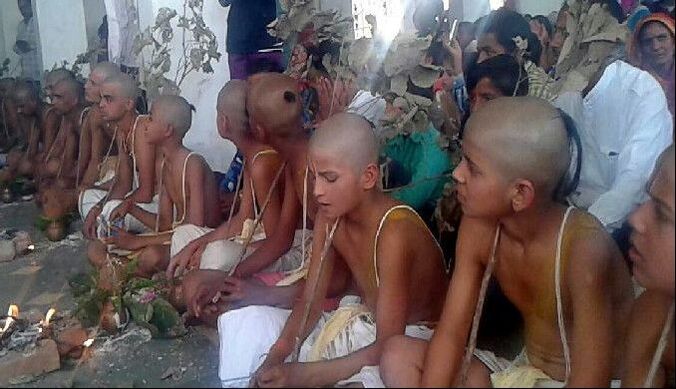

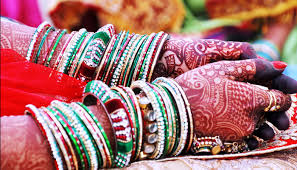
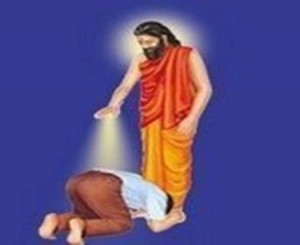




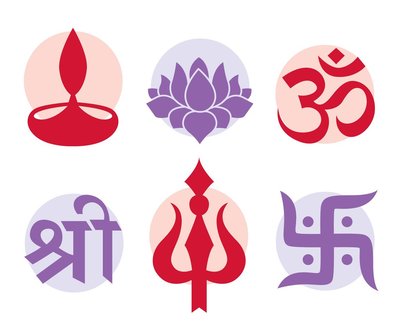
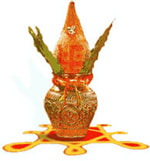

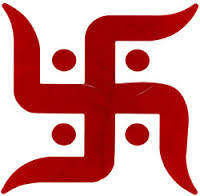
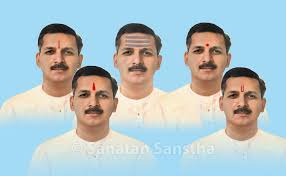
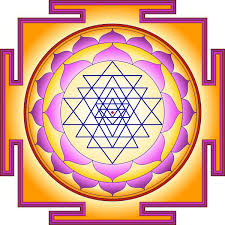
 RSS Feed
RSS Feed